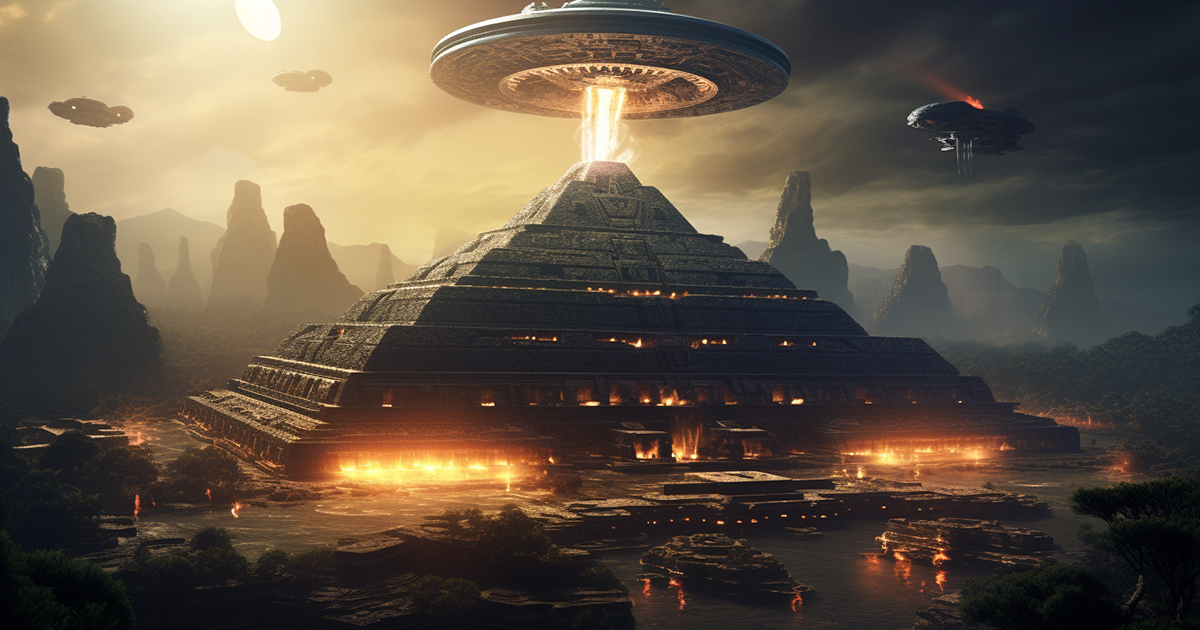Unveiling the enigmatic secrets of civilizations long past always kindles a deep intrigue within us. The imposing pyramids of Teotihuacan and Chichen Itza stand as monumental testaments to the creative genius of ancient builders.
While these architectural marvels are often linked to the cultures that erected them, an intriguing perspective proposes a connection that transcends earthly realms.
Dating back to the first century A.D., Teotihuacan once reigned as Mesoamerica’s largest city, inhabited by 125,000 individuals. Amidst its revered temples, the Temple of the Feathered Serpent, a grand step pyramid dedicated to the god Quetzalcoatl, reigns supreme.
This deity, synonymous with creation and rainfall, held immense importance in Aztec beliefs. Notably, Quetzalcoatl’s influence extended beyond Mesoamerica, manifesting in Mayan mythology as Kukulkan.

The Pyramid of Kukulkan at Chichen Itza, located about 900 miles east of Teotihuacan, stands as another remarkable edifice. Its alignment with celestial events adds a layer of intrigue.
Annually on March 23rd, at sunrise, light and shadows converge to form triangular patterns on the pyramid’s stairway. This spectacle peaks on September 21st when only light and shadow create the illusion of Kukulkan descending. The pyramid seemingly transforms into a cosmic event marker.
This cosmic alignment prompts contemplation on whether the pyramid’s purpose transcends mere worship. Could it be that this structure commemorates an extraterrestrial visitation, with its light and shadow interplay mirroring an original alien landing?
The narrative extends further to Greece’s Evia island, home to mysterious megalithic sites known as “dragon houses.” Perched atop Mount Ohi, the primary dragon house entwines with its own captivating legend.

Local tales speak of Zeus descending from the heavens on this very mountain. In ancient Greece, the term “dragon” denoted not just flying monsters but beings possessing superhuman abilities.
The dragon house’s elevation, colossal megalithic blocks, and unique placement defy conventional rationale. Could these structures have served as landing sites for celestial beings? Did Zeus’s descent hold more than mere mythological significance?
As these pieces intertwine, a captivating tapestry of cosmic contact unravels. The pyramids and dragon houses may transcend mere cultural monuments, potentially serving as beacons of celestial interaction.
The concept of ancient astronauts gracing Earth and sharing wisdom with our predecessors emerges as a compelling theory, given the intricate designs and celestial alignments of these structures.
Video:
While unraveling the enigmas of antiquity remains elusive, the tie between these structures and the cosmos beckons us to explore the realm of extraterrestrial influence. The mysteries of yore continue to enchant our minds, challenging our perception of the world we inhabit.
